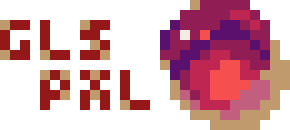
Pixel art is an art form closely associated with the rise of classic arcade games in the 70s and 80s (Though similar art forms have existed for centuries). Due to the limited display capabilities of early game consoles, game designers and artists were forced to restrict the size and color count of game visuals. A limited number of LEDs were used to display colors on the screen, and these became the fundamental building blocks of the art form; the single pixel. These pixels are especially obvious in titles like Pong, Space Invaders, Pac-Man, or even early Super Mario Bros games.
Today, the visual restrictions of the 20th century have long since been surpassed, though pixel art remains a thriving art form present in many current game releases. A popular example is the multimillion-dollar grossing title, Stardew Valley, released in 2016 by UWT alum Eric Barone. For many, pixel art remains a poignant link to the earlier days of video games, yet the art form has continued to evolve as restrictions are surpassed.

Speaking of restrictions, the screen you are using to view this message, and all of the images on it, are still composed fundamentally of single pixel units, but they are likely so numerous that you can no longer make out the individual pixels unless you lean in and squint really hard. This raises an important question: If everything on your screen is made of pixels, isn't everything pixel art?


The short answer to that is no. As an art form, pixel art places special emphasis on the individual square building blocks themselves. Pixel artists take care that the individual units are visible in a finished piece. Each pixel is often placed intentionally and with great care. While any given photograph or digital art piece may include thousands of distinct colors, pixel art often includes no more than a few dozen, and beautiful works have been created with as few as 2. As a unique art form, pixel art is governed by these and many other rules and restrictions, some of which will be described in the following tutorial section.